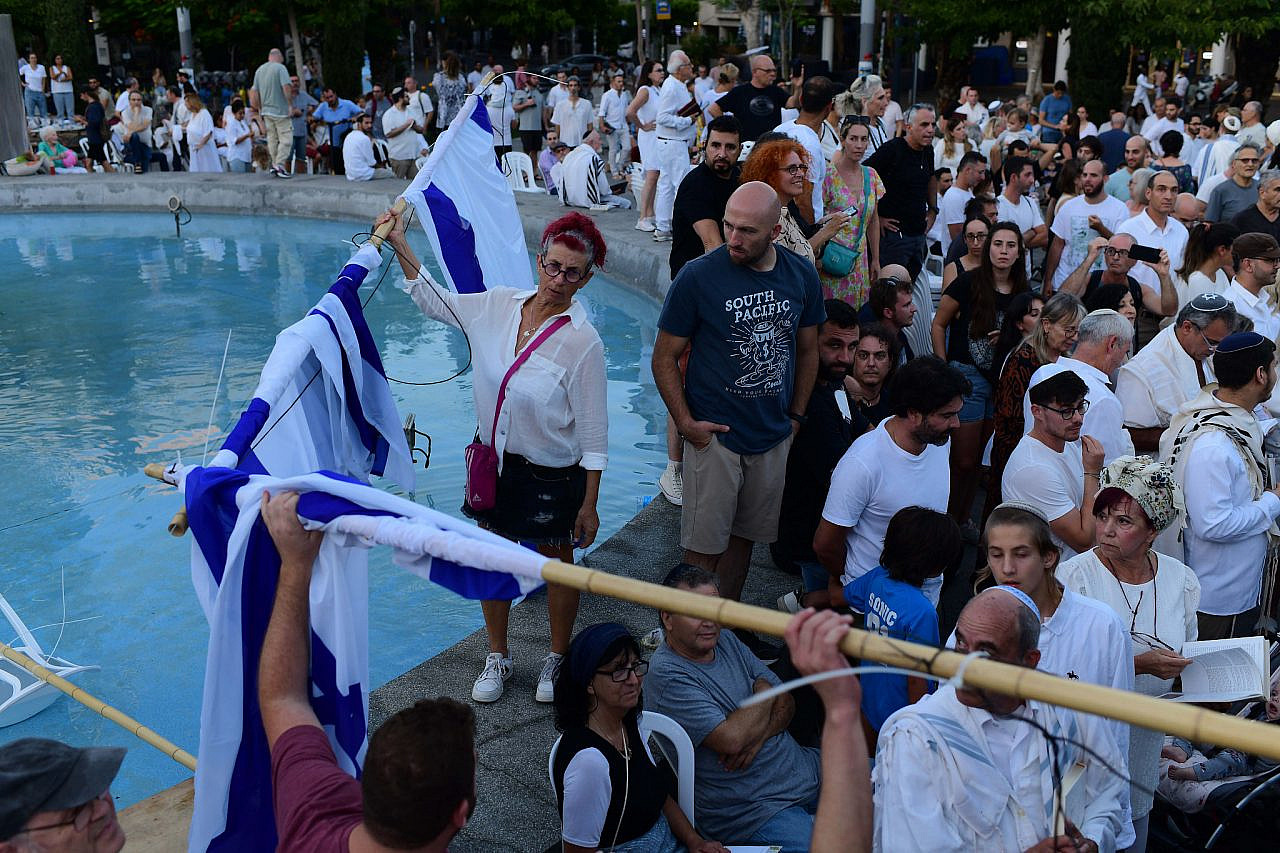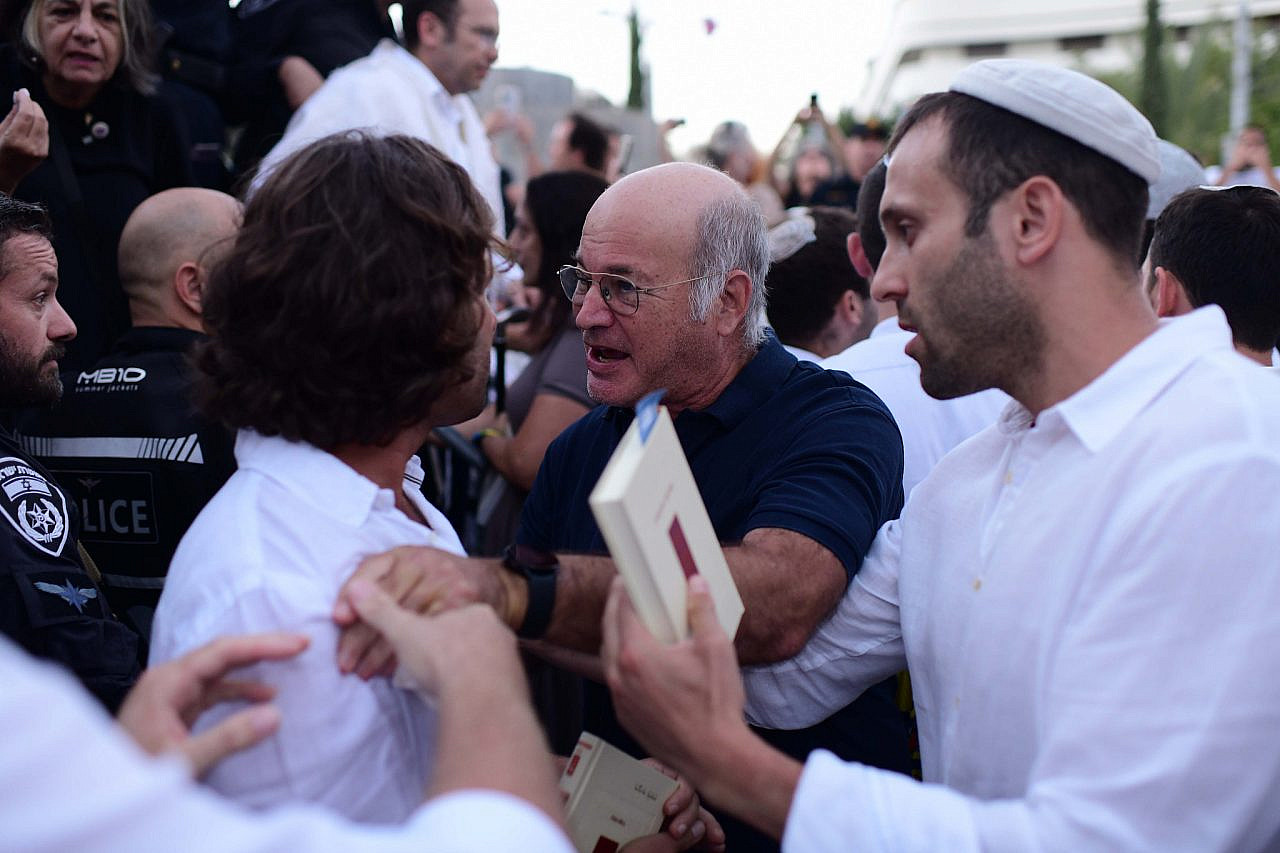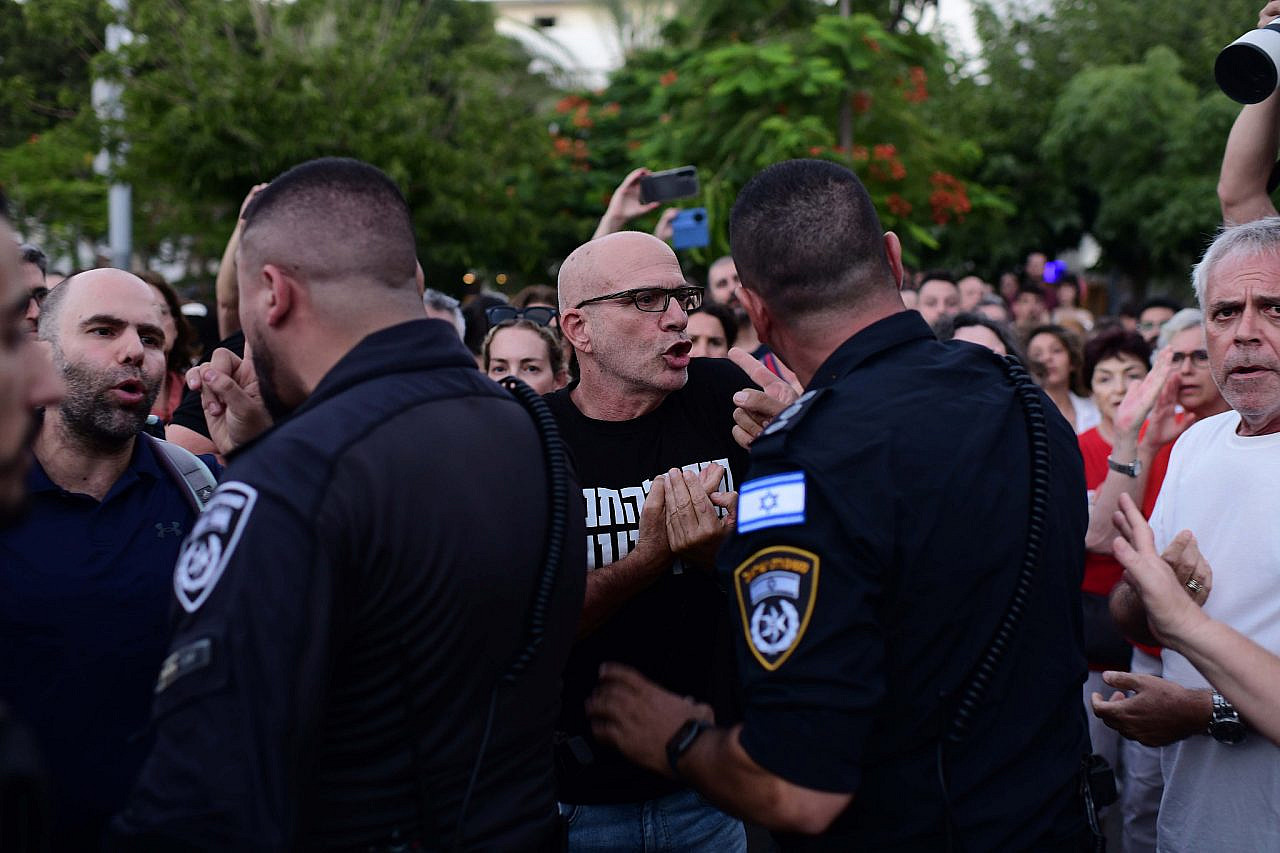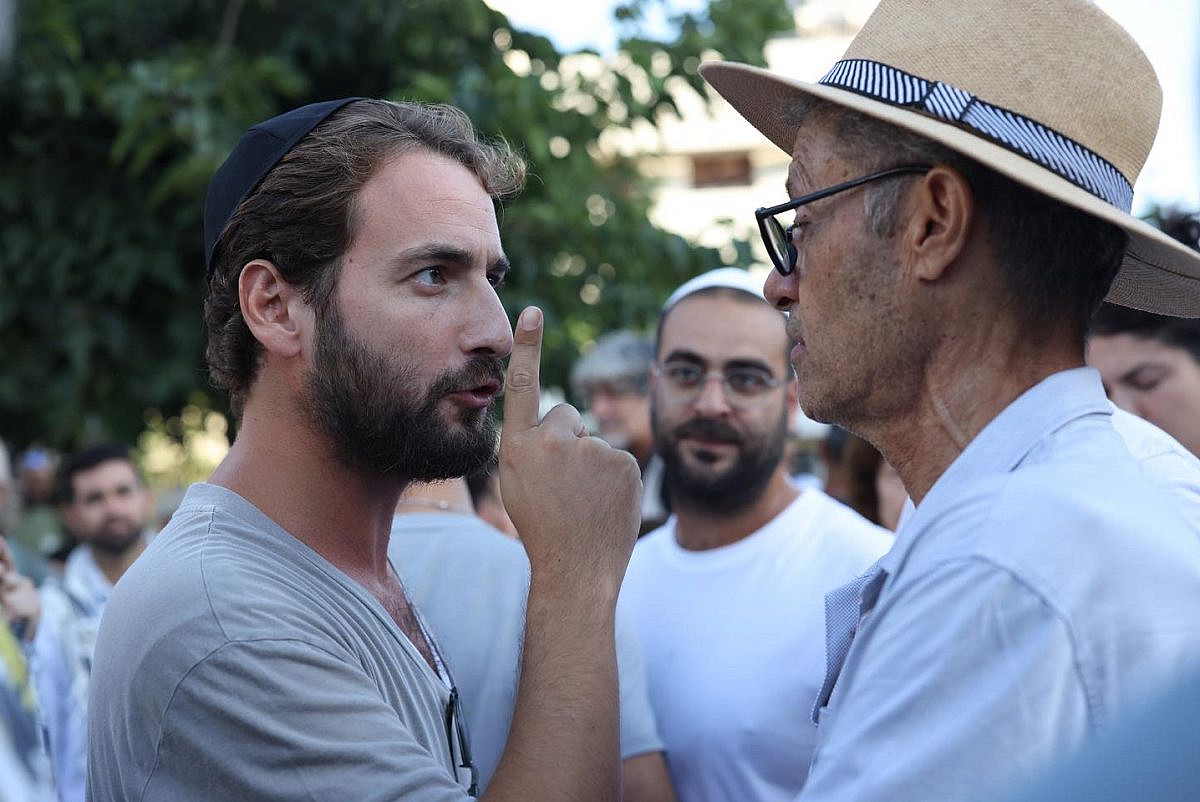The members of the previously little-known “Rosh Yehudi” organization may live in Tel Aviv, but it seems they were out of touch with the prevailing mood among their neighbors. They thought, perhaps, that most Tel Avivians would find it distasteful to stage a protest on Yom Kippur, the holiest day of the Jewish calendar, and that they would choose to respect Orthodox religious customs by allowing gender-segregated prayer in their city to go unhindered. They couldn’t have been more wrong.
It all began when Rosh Yehudi’s leaders asked the Tel Aviv Municipality for permission to hold a gender-segregated prayer service in Dizengoff Square on the eve of Yom Kippur. The Municipality has permitted gender-segregated prayer in public spaces since the outbreak of the COVID-19 pandemic; this year, however, the Municipality decided to reinstate the prohibition on the physical separation of men and women in public spaces that was put in place in 2018.
The Municipality’s decision to prevent public prayer that uses a physical barrier (known in Hebrew as a mechitza) to separate between men and women was upheld by both the Tel Aviv District Court and the Supreme Court following appeals. As Yom Kippur began on Sunday evening, however, Rosh Yehudi — one of a network of “Garin Torani” groups in Israel, which aim to spread religious-Zionist values among the Jewish public — sought to circumvent the ban on a mechitza by setting up a makeshift partition out of bamboo sticks and Israeli flags.
Inspectors from the Municipality were present and elected not to interfere (the mayor later admitted that he asked them to avoid escalating the situation), before protesters arrived and took down the mechitza themselves. The organizers asked police officers to remove the protesters, but they refused. At that point, those participating in the prayer service — a few dozen people — relocated to a nearby synagogue. The police have since revoked Rosh Yehudi’s permission to hold public events for the upcoming festival of Sukkot.

What is clear from this episode is that the Israeli right — from the members of Rosh Yehudi to their leaders in the Knesset — have apparently failed to take heed of the changes taking place in Israeli society in general and Tel Aviv in particular. Amid the sustained public mobilization against the far-right government’s judicial coup, many Tel Avivians are simply fed up, and are no longer willing to accede to the right’s dictates. They refused to go along with the pretense that a public prayer service is innocent and apolitical, that a few flags separating men and women is not a form of gender segregation, or that Rosh Yehudi’s intention is anything less than to transform the state into a Jewish theocracy and import their methods of operation from the West Bank into the heart of Tel Aviv.
But those on the right are not the only ones who misjudged the mood of the public; the reactions of the protest movement’s leaders also show them to be out of step with their own camp — and not for the first time.
Going further than their leaders
On Tuesday morning, after Yom Kippur ended the night before, protest leaders took to X (formerly Twitter) to voice their support for those who prevented gender-segregated prayer from going ahead in Dizengoff Square, and hit back at the “spin” coming from the right. By Tuesday evening, however, they had changed their tune entirely.
Several of the most prominent figures in the anti-government protest movement put their names to a statement strongly condemning “any use of violence.” It went on: “We will not assume the role of the police or the courts even when our hearts are aching.” It is noteworthy that even the statements from opposition leaders Yair Lapid and Benny Gantz condemned Rosh Yehudi in stronger terms.

Did the protest leaders decide to reverse course after seeing the polls that indicated a small majority in favor of segregated prayer in public spaces and a large majority that opposes the protest against the worshippers in Dizengoff Square? Possibly. Also unusual is the fact that the message was published with the signatures of the protest leaders, and not in the name of the organizations they belong to, such as “Kaplan Force” or “Black Flags” — organizations that published messages of support toward the protesters on the eve of Yom Kippur.
What is clear is that the announcement caused outrage among protesters. “What you did with this letter, (is that) you cast doubt on the protest … This is an act that should not be done, and may weaken and divide the protest. It is unnecessary and harmful,” tweeted Baruch Sharon, a prominent activist. Yair Olmert, another well-known figure in the anti-government protests, added that the announcement represented a “magnificent own goal” for the protest movement. So fierce were the reactions that one of the letter’s signatories, Or-ly Barlev, felt compelled to publish a clarification message in which she praised the “courageous work” of those who fought against gender segregation in Dizengoff Square.
It is worth noting, despite the condemnations by right-wing leaders and then the protest movement leaders themselves, that there were no acts of violence by protesters against worshippers in the events on the eve of Yom Kippur, and with the return of some worshippers and protesters to the square the following day. The only exception is one case in which a woman allegedly pulled the tallit (prayer shawl) of one of the worshippers — and this is not really clear in the documentation released from the incident. From what was filmed, at least, the violence went in the opposite direction, with worshippers pushing some of the protesters and confronting them.
Not only did the protest leaders fall for the right’s spin, they also misjudged the dominant sentiment among those protesting against the government’s judicial coup: people are ready to fight back. What happened in Dizengoff Square is the result of the fact that many of the protesters see the connection between the activities of settlers in the West Bank and the Garin Torani groups in Tel Aviv and other cities. They consider the proselytization efforts of groups like Rosh Yehudi to be part of an attempt to import the nationalist and racist ideology of the settlers from the West Bank into the heart of Tel Aviv.

And while the protest leaders’ letter declared that it is not the place of the public to “assume the role of the police or the courts,” it is doubtful whether Mayor Ron Huldai would have committed to prevent future gender-segregated prayer in the city without the determined action of the demonstrators on the eve of Yom Kippur — in much the same way that the government would almost certainly have gone ahead and passed several more laws to dismantle the power of the judiciary had it not been for the mass and stormy public demonstrations throughout the past nine months.
Gone are the days in which a majority of the Israeli public buys the spin coming from Netanyahu and his acolytes. And while the events in Dizengoff Square could, as many are warning, serve the prime minister by dividing the protest movement, it is also possible that they are only a precursor to what is to come.
Most read on +972
As with the issue of the occupation, which the protest leaders ignored at first and slowly had to allow in through the back door due to the public’s rising opposition to the settler pogroms taking place in the West Bank and the increasingly vocal support of members of the coalition for the man convicted of killing three Palestinians — including an 18-month-old child — in an arson attack in 2015, so it is possible that even in opposition to the religionization of public space, the protesters are willing to go much further than their leaders.
A version of this article was first published in Hebrew on Local Call. Read it here.






